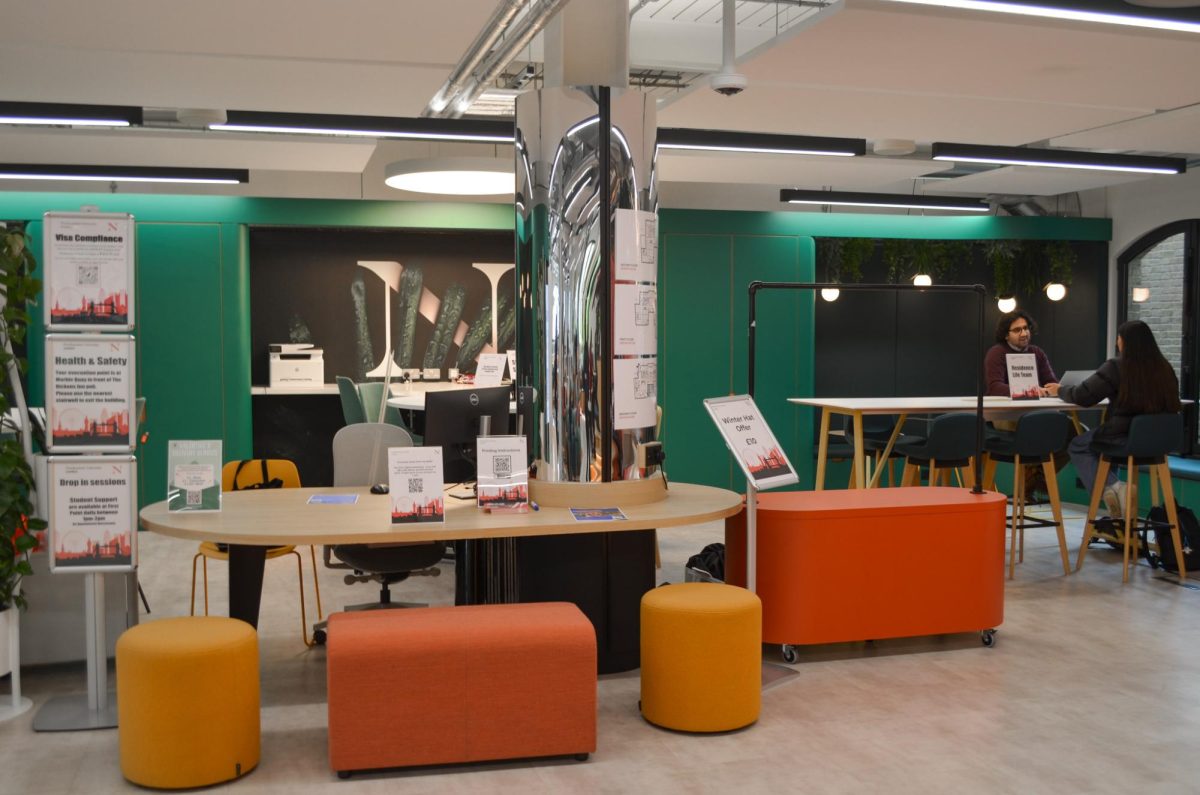
A new exhibit at the Museum of Fine Arts (MFA) calls attention to the intersection of high art and being high.
Where that intersection lies, however, remains unclear.
The exhibit, which opened last Monday and runs through Aug. 13, is titled “Light My Fire: Rock Posters from the Summer of Love.”
It showcases close to 25 of the flower era’s trippiest advertisements from San Francisco-area clubs between 1966 and 1967.
Set in a circular corridor behind other works whose artistic values have been questioned in the past like Georgia O’Keefes’ flowers and Jackson Pollock’s splatter-scapes, the exhibit punctuates the MFA’s move toward “fun and different,” said Jennifer Standley, a museum spokesperson.
“The museum is always looking to engage new audiences and looking to branch out,” she said.
Instead of going through the typical process of bidding wars with high-end dealers for works with high dollar value, curator Patrick Murphy said the museum worked with vendors who happened to have the posters.
“There are a few dealers who specialize in this material,” he said. “We were given a certain amount of money, and were able to buy 38 posters, 25 of which are in rotation.”
Though hippie art may sometimes be thought of as unprofessional and incomprehensible without the aid of LSD, one of the two artists whose work is showcased, Victor Moscoso, is a formally-trained artist under renowned painter Josef Albers.
That’s not to say formal training can be detected in a neon pink and orange rendering of a man wearing a monocle holding a key around his neck with barely-legible lettering advertising the band, The Plastic Explosion.
For another, advertising an event called the “Sphinx Dance,” which featured the The Peanut Butter Conspiracy, neon red and purple glide next to each other.
The collection’s second set of works is by Wes Wilson, who the museum identifies as the “most important” psychedelic artist.
His colors are less eye-popping than Moscoso’s, but the completely illegible font that Wilson patented more than makes up for the confusion.
Curators set up a colored light to project onto four of Wilson’s prints for a 3-D effect. After staring at it long enough, the letters may seem like they can seep into one’s mind via osmosis.zz
After stepping out of the light, it is immediately evident how fitting the museum setting may be for the posters.
Amid the colorful, tattered streets, the posters may not have stood out. But against the stark, white museum walls, it becomes clear how bright the chosen colors were and how mind bending the designs are meant to be.
To make it a full sensory experience, the MFA put together a list of songs – available for 99 cents per song on iTunes – that would help “recreate” the era of the posters, including The Doors’ “Break on Through (To the Other Side)” and Buffalo Springfield’s “For What It’s Worth.”
The posters were made for events that included jarring music, wild lights and art films being projected onto the walls.
Like most of San Francisco’s culture from the time, the bands advertised may be memorable, like the Doors and Jefferson Airplane, or forgettable, like Cloud and the Chambers Brothers.
But aside from giving ideas for iTune purchases, the bands are relatively insignificant compared to the art.
Those seeking to get inside the minds of 1960s artists or experience the music of the time are better off staying home and catching “Dazed and Confused” yet another time.
Still, the trip may be worth it. If the MFA is willing to meet college students halfway by using pop culture as a vehicle for art, it seems students are obliged to take the opportunity.








